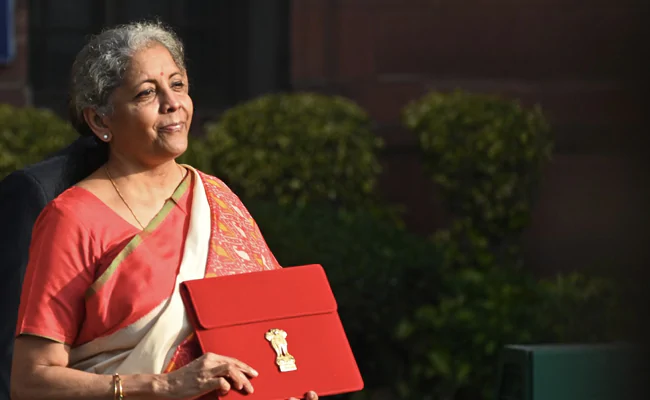Budget 2022: Highlights
Will the ghost of Pranab Mukherjee come back to haunt Nirmala Sitharaman? She has opted for a high fiscal deficit for the third time in a row to keep stimulating an economy still recovering from Covid. This has similarities with Mukherjee\’s economic stimulus when he became finance minister after the Great Recession.
He inherited a fiscal deficit of 6.1% of GDP in 2008-09, increased it to 6.6% the next year, and after a reduction to 4.9% in 2019-11, he sent it up again to 5.9% in 2011-12. Mukherjee found it politically difficult to squeeze spending and raise taxes to reverse the stimulus. Analysts castigated him for not reducing fiscal deficits fast enough, for persisting too long with a stimulus.
Export StagNation
One result was high inflation that caused much misery and made exports uncompetitive, leading to export stagnation. The high fiscal deficit helped widen the current account deficit (CAD) sharply to over 4% of GDP, leaving India vulnerable to any unexpected problem. This came with the \’taper tantrum\’ of 2013.
The US Federal Reserve panicked markets with a surprise announcement that it would taper its bond purchases. Sensing risk, investors fled out of all emerging markets into the safety of US bonds. The rupee crashed from ₹55 to ₹68 to the dollar, and the Sensex with it. Raghuram Rajan, the new RBI governor, stabilised the rupee. Mukherjee was kicked upstairs to become president.
Sitharaman, too, is persisting with high fiscal deficits: 9.2% of GDP in 2019-20, 6.9% in 2020-21, and a projected 6.4% next year. The combined Centre-state deficits exceed 10% of GDP, a crisis level by normal IMF standards. The debt-GDP ratio has soared to almost 90%. Covid justified extraordinary measures. But I am astonished that virtually nobody worried any more that high fiscal deficits can be inflationary. The old Fiscal Responsibility and Budget Management (FRBM) target of 3% now seems a tale from another century.
Why? Because the world over, after the Great Recession of 2008-09, countries have run high fiscal deficits, and central banks have printed trillions of dollars to buy securities to curb interest rates. Yet, inflation has been very low. Economists initially attributed this to low demand for finance after the Great Recession – it took time for corporations to deleverage and banks to clean up their balance sheets.
But when inflation stayed low for years, many economists attributed this to demographic change that had created a permanent savings glut. Ageing in major economies led to falling consumption – the aged spend less than youngsters – so savings had soared.
The savings glut, exacerbated by loose monetary policy, meant demand could be stimulated a long time without causing inflation, especially when the stimulus boosted asset, rather than consumer, prices. Real interest rates fell to zero, stock markets soared and investors put surplus cash into speculative vehicles like cryptocurrencies and non-fungible tokens (NFTs).
All good things must end. Inflation is now rising everywhere (almost 7% in the US). To check prices, the Fed may raise interest rates five times in 2022. Global money is flowing back from emerging markets like India to safer western havens. This is not yet a flood, but cross your fingers.
The global scene threatens India\’s inflation. High import prices (especially for oil) mean wholesale prices are up almost 14%, though consumer inflation is a bearable 5.4%. The GDP deflator – the widest measure of inflation – is a whopping 8.4%. The budget assumes, very optimistically, that the GDP deflator will collapse to just 3% next year, reversing last year\’s inflationary surge. Maybe so. But the assumption could go terribly wrong. RBI data show household expectations of inflation exceed 12%.
Not Many DefiCitings
On TV, I called the budget strategy a gamble on growth while risking inflation via a high fiscal deficit. GoI\’s principal economic adviser Sanjeev Sanyal responded that high deficits did not cause inflation, only high monetary growth did, and broad money supply was under control (growing at 9-10%). However, other economists (notably German) believe fiscal deficits are inherently inflationary. I asked Manmohan Singh on TV after the 2012 budget how to check inflation. He replied, \’We should cut the fiscal deficit.\’ He did not qualify that with reference to the money supply.
Has the world changed since then and become inflation-proof? Or is that a temporary illusion? After the Great Recession in India, banks had impaired balance sheets and heavily leveraged corporations sought to deleverage. Banks did not want to lend, and corporations did not want to borrow. That slowed monetary growth and checked inflation.
But now the budget speech says corporations have deleveraged, banks have repaired their balance sheets and both sides are set for an investment boom, kickstarted by high capex in the budget. The scenario is plausible. But if indeed bank lending surges and money supply with it, inflation could surge too. The RBI is reluctant to get tough and blunt Sitharaman\’s stimulus.
A high fiscal deficit can spill over into the balance of payments (BoP), widening the CAD. The latter is under control today thanks to buoyant exports. But imports are soaring even faster. Keep your fingers crossed.
I think Sitharaman is right to gamble on growth. But she should be aware it is a gamble.
This article was originally published in the Economic Times on Feb 8, 2022.


